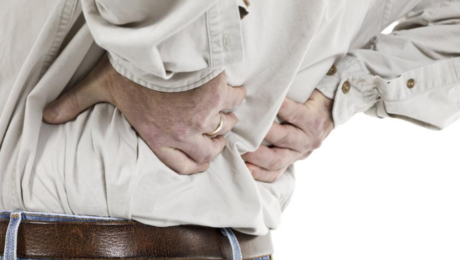According to the Hebrew SeniorLife Institute for Aging Research, one-third of Americans between 40 and 59 years of age show symptoms of moderate to severe degenerative disc disease.
On top of that, 80% of Americans above the age of 80 have had cervical or lumbar degenerative disc disease.
Understanding Degenerative Disc Disease
Contrary to popular belief, degenerative disc disease is not a ‘disease.’ It’s the result of wear and tear that spinal discs sustain over time.
Intervertebral discs are flexible pads between the vertebrae that enable bones to move smoothly. The discs help the spine bend and act as a cushion for stress during high load or movement.
As the term degenerative implies, these discs deteriorate over time. Sometimes, the degeneration leads to bone spurs, which cause the pinching of the nerves that go from the lower back to one or both legs. This leads to radiating pain in the lower back and legs, which is known as sciatica.
Causes of Degenerative Disc Disease
Occasional injuries and long-term stress to the spine cause damage to the discs in the back. Contributing factors that lead to degenerative disc disease include:
Loss Of Healthy Fluid — Healthy intervertebral discs are about 90% fluid. This decreases with age, causing the discs to become thinner and reducing the gap between the vertebrae. This makes them less effective at absorbing shock and cushioning the bones and joints.
Deteriorating Disc Structure — Over time, discs become prone to small cracks and tears in the outer layer, causing them to rupture. As the soft and gelatinous material inside the discs seeps through, they bulge. If untreated, the discs can break into fragments.
When discs deteriorate, they can disrupt nerve functions, break down tissues, cause herniated discs, spinal stenosis, and create a build-up of osteophytes.
Possible Treatments:
Treatments for degenerative disc disease are usually include non-surgical options:
NSAIDs — Controlling pain and swelling through nonsteroidal anti-inflammatory drugs such as naproxen and ibuprofen.
Exercise And Rehabilitation — Exercises like swimming, cycling, core strengthening programs, Pilates, yoga, and walking are designed to stabilize and strengthen the affected disc and the surrounding areas.
In severe cases where the pain lasts for more than six months, some doctors may recommend endoscopic discectomy, artificial disc, or spinal fusion. Consult an experienced spinal surgeon to determine the extent of deterioration and whether you need surgery.
Schedule an Appointment
Have you been suffering from symptoms relating to degenerative disc disease? Houston Neurosurgery & Spine is a top neurosurgery and spine center Houston that treats pains and symptoms relating to herniated or bulging discs among other spinal conditions.
We offer the least invasive options to our patients in Houston that can provide immediate relief from shoulder, neck, and back pains. Call us today at 832.522.8500 for more information at our neurosurgery center in Houston.


